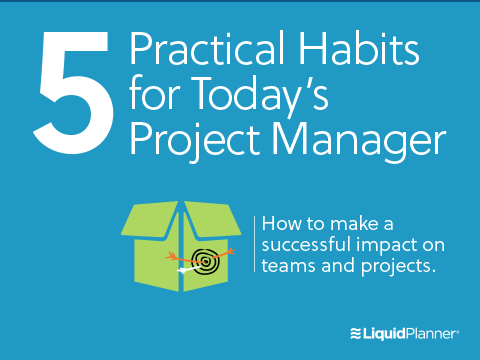Anyone familiar with the saying, “The best-laid plans of mice and men,” also realizes that no matter how well you prepare, your efforts can easily go off the rails without focused attention and proper follow-up along the way.
Organizations and teams need to pay attention to project execution in order to deliver impactful projects. That’s what project management is all about. No matter how deep an organization’s pockets are, and no matter how well-respected a project leader may be, no one can afford to waste time, effort and money on a project that is poorly executed and does not produce results.
So, how can project management professionals and their organizations make sure that projects are implemented successfully? We suggest you follow these three project execution strategies to keep projects running efficiently and on schedule.
1. Define specific and measurable objectives.
A well-executed project is seen as one that achieves its desired results. So it makes sense to invest the time up front to determine what those desired results should look like. From the outset, savvy project leaders define specific, realistic goals for their project. Those specifics should include:
- The timeline for the project. Know how long it should take to execute the project overall. Identify milestones and deadlines that are needed to accomplish incremental progress. Keep in mind how much time the project participants are able to contribute on a weekly or daily basis to this project, in addition to their other responsibilities.
- The staff and infrastructure resources necessary to complete the project. This would include full-time employees, outside contractors, part-time staff or specialized freelance support to properly execute the project.
- The cost of the project. Be sure to take into account human resources and material costs, including hardware and software or consulting fees, travel or other incremental expenses.
- The metrics for success for participants and organizational leadership. When determining what qualifies as a success, consider the time and money being committed. Be clear on the specific goals that the project means to accomplish. Identify what is considered the best measurable result. Determine all the impactful results that will justify the project investment.
2. Plan for the unexpected.

Good project managers take into account that not everything will go as planned. Hope for the best, but plan for the worst. No matter how well you architect your project plan, things can and will go awry. The scenarios are endless: One of your key participants might get pulled onto another commitment; a team member could suddenly go on leave, or quit the organization; a new executive could cause organizational priorities to shift significantly. The list goes on. It makes sense to outline backup measures, and have a project schedule that reflects and accommodates all types of scenarios.
Being prepared for changes also means you can stand behind a project’s goals on a broad level. As the project is being executed, project leaders should be able to explain and support what has happened in the project to date, along with: current status, what the results thus far mean to the organization and its objectives, and what specific impact these results will have on the organization in terms of cost reduction, broader opportunities, etc.
3. Measure progress through project waypoints.
According to business process improvement guru, H. James Harrington, “Measurement is the first step that leads to control and eventually to improvement. If you can’t measure something, you can’t understand it. If you can’t understand it, you can’t control it. If you can’t control it, you can’t improve it.”
The process to improvement must invariably include measurement; and not just on a one-and-done basis. You need to measure progress along the way to see an updated view of the project so you can respond immediately if (and when) project parameters need to be re-calibrated or changed. Measurement should be happening organically so project leaders have visibility into the time commitment of project participants and the cost of materials and infrastructure.
However, measuring the incremental development of a project should go deeper. If you want to measure how successfully a project was executed, examine no more than five critical indicators of project performance to determine if the project is moving apace toward its desired objectives.
Conclusion
Take the time to define specific and measurable project objectives, and communicate those objectives to the team. These metrics for success are critical for good planning and for managing expectations inside your organization. Being prepared for the changes that can unfold during the lifespan of a project. And keeping a sharp eye on how your project is performing throughout its execution, so you can pivot and adjust as needed to meet defined project objectives successfully.
How else do you develop effective project execution strategies? By developing, nurturing and sharpening your project management skills–whether you’re a full-fledged PMP or a team leader who manages projects. To be the best at what you do, download our eBook, 5 Practical Habits for Today’s Project Manager.








